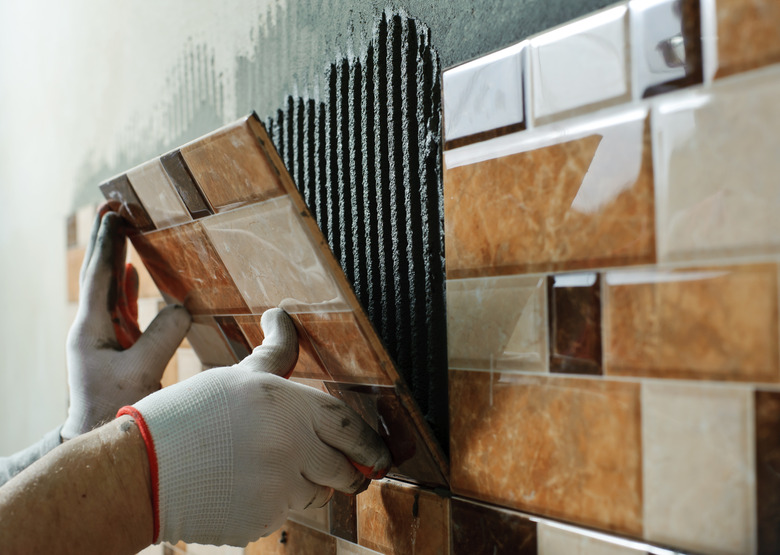Can Ceramic Tile Be Installed Over Semi-Gloss Painted Walls?
Ceramic tile gives your wall a completely fresh look with a variety of patterns and colors that match every imaginable decor. Subtle hues add dignity to a kitchen or bathroom while brightly colored, geometric patterns, stripes or floral designs brighten up the room. If you're tiling over painted walls covered in semi-gloss paint, the surfaces can easily be prepared for successful ceramic tile installation.
Ceramic Tile Advantages
Ceramic Tile Advantages
Ceramic tile is one of the least costly choices for backsplashes or to tile over drywall bathroom walls. Prices depend on the quality of the clay, how it's fired and glazed, and if it's manufactured by hand or machine. They're easy to install with a little patience and attention to detail, which means ceramic tile installation can be a weekend DIY project. Ceramic tiles are also durable, easy to clean and low maintenance.
Semi-Gloss Paint Characteristics
Semi-Gloss Paint Characteristics
Semi-gloss paint is similar to a satin paint finish with a little more sheen. It's more durable than paint finishes with less sheen, making it easy to scrub off dirt, grease and other marks, making it ideal for kitchens and bathrooms. It's durable enough to withstand repeated cleaning without losing its gloss. High gloss paint reflects light and can create too much glare in a brightly lit room. Flat paint is difficult to wipe clean, absorbs stains and easily shows signs of wear if too frequently cleaned.
Tiling Over Painted Walls
Tiling Over Painted Walls
Before you tile over painted drywall, thoroughly wash and dry the semi-gloss walls to prepare them for ceramic tile installation. Use 80-grit sandpaper to lightly hand sand the paint on the walls to a rough finish. This helps the tile stick to the surface. Wipe away the accumulated dust with a damp cloth.
If you're using peel-and-stick tiles, attach them to the surface with your hands. Use medium pressure to secure them to the wall.
For tiles attached with wall adhesive, spread the mastic adhesive on the wall in sections. Make ridges in the adhesive with the forked side of the trowel. This increases adhesion to help the ceramic tiles stay in place. Use spacers between the tiles so the grout is evenly distributed. Continue working in small sections to apply the adhesive and install the tiles.
After the tile adhesive has dried for 24 hours, remove the spacers. Spread prepared grout into the gaps between the tiles using a grout float. Wipe away the excess grout as you by swiping the grout across the tile diagonally. After the grout starts to dry for a few minutes, gently wipe the tiles with a wet sponge, being careful not to dig into the grout in the gaps. Let the grout completely dry before applying a sealant to it.
Installing Tile on Other Surfaces
Installing Tile on Other Surfaces
Ceramic tile can be directly applied to flat paint surfaces, unfinished dry wall or gypsum board. To attach ceramic tile to walls covered with high gloss paint, prepare the surface just as you would for semi-gloss paint. If it's applied over raw wood, the finish must not be too rough or the tile won't adhere evenly. For best results, lightly sand the wood to a medium-rough finish.
